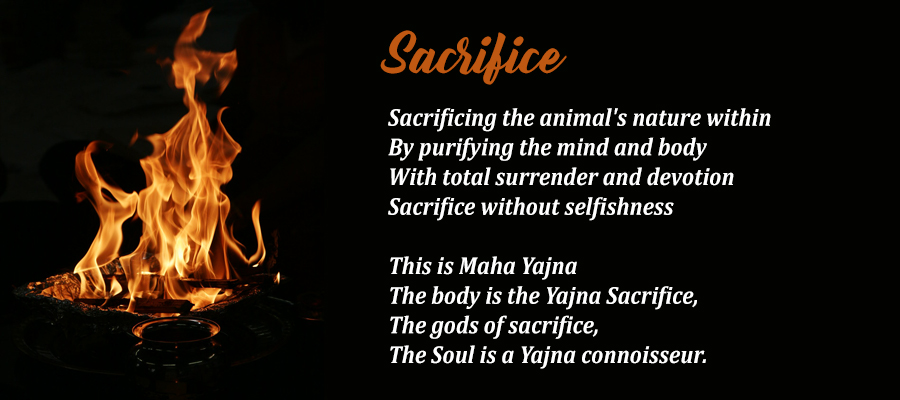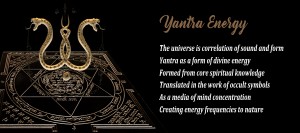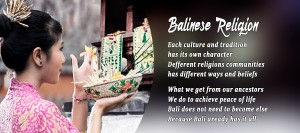- 1Maha Yajna
- 1.1The Purpose of Maha Yajna
- 2The Form and Types of Maha Yajna
- 2.11. The Universe is Maha Yajna
- 2.1.1Creation
- 2.1.2World / Universe
- 2.22. The Body of Yajna
- 2.33. The Birth of Yajna
- 2.3.2.1Rebirth or the return of the soul
- 2.44. The Life of Yajna
- 2.55. The Death of Yajna
- 2.66. The Meditation of Yajna
- 2.6.1
- 2.6.2Liberation
Maha Yajna has been widely reviewed in various Hindu literature. In the early Vedic religion, the rituals of Yajna were the only means to achieve the four aims of human life. The emphasis was mainly upon the ritual knowledge as contained in the Samhitas and the Brahmanas.
Although Vedism began with a clear emphasis upon rituals, it gradually developed a spiritual aspect of it, as is evident from the development of the Upanishadic philosophy, which increasingly integrated the framework of the sacrifice into every aspect of Vedic beliefs and practices.
In formulating and explaining their teachings and findings about the truths of existence, the Vedic seers used the ritual model to formulate their theories. The result was an extensive growth of Vedic philosophies, with the ritual framework as the hidden model to explain the mysteries of creation.
People performed the rituals to nourish the gods and ancestors who depended upon them for the sacrificial offerings. The Vedas suggest that although the gods stand above humans in the hierarchy of God’s creation he made them to invariably depend upon humans for food and nourishment. It created balance between the two and enforced mutual dependence and cooperation.
However, with the growth of contemplative practices and asceticism, overtime the focus shifted from the outer to the inner aspects of life and from worldly life to spiritual life. While rituals continued to play an important role in the lives of householders, in the later stages of their lives they turned their attention to the internal rituals to escape from the cycle of births and deaths. They withdrew from life and practiced internal rituals of breath control, self-purification, austerities, yoga, contemplation and self-absorption to stabilize the mind in God.
Maha Yajna
Maha yajna is a sacrifice, an offering, an oblation. It’s most known form is an offering into the fire but it can take other forms as well. The offerings, known as samagri, are varied and include rice, grains, milk, ghee, fruits and other foods.
Non-food items can be offered also depending on the yajna. The offerings are given as nourishment to the devas, the Vedic gods, who have various cosmic functions in the universe.
Agni, the deity of fire and the messenger of the devas, has a principal role in the yajna. Being embodied in the fire, Agni is vital for taking the prayer to the heavens which are the abode of the devas.
The yajna takes a very specific form, with the fire or ‘kund’ set up in line with detailed instructions.
Offerings are made in a designated order, and with Sanskrit mantras chanted at the same time. The yajna can only be conducted by Brahmins, suitably qualified members of the priestly class with others being allowed to intermittently join in the offering.
The Purpose of Maha Yajna
The undertaking of yajna is dharma, or duty, which is righteous living in accordance with the cosmic law. There are 21 nityakarmas, or obligatory yajnas, two of which are to be performed daily.
The remainder are performed at various times of the year. Another 400 or so kamyakarmas, or optional yajnas, are described in the Vedas and can be conducted to receive specific blessings. For example, should someone have trouble conceiving a child or if someone faces financial difficulty, one can perform a yajna to the appropriate deity to overcome the karmic obstacle.
By performing the prescribed yajna one nourishes the devas and receives nourishment in return.
The yajna is a harmonious action in keeping with the cosmic order. By doing the nityakarma yajnas one behaves according to dharma and purifies oneself by aligning one’s consciousness to sattva.
By doing kamyakarma yajnas one can utilise the law of karma to overcome karmic blockages in this life or bring about the desired result. With the performance of sacrifice according to dharma one is rewarded with blessings from the devas. Sattvic actions bring about sattvic results in this life and the next.
The yajna is described in the Vedas. These are the ancient texts of Hinduism believed to be eternal Sruti (literally ‘that which is heard’) and revealed to the ancient seers, known as Rishis, in the depths of ecstatic meditation.
It also prescribes strict and detailed rules around sacrifice to the devas as a way of honouring them and receiving their blessings.
It is easy to dismiss the yajna but its underlying truth can be understood by looking at the other major section of the Vedas, the jnyana kanda. This describes profound truths about the ultimate nature of reality.
In Hindu cosmology God, the Karana Karanam, or eternal, infinite ‘Cause of Causes’ manifests the material universe out of Himself as ‘leela’ or playful creative expression.
It is by the will of God that Prakriti evolves out of Him and devolves back into Him in a beginning-less and endless cycle.
Prakriti, the material universe, at the most fundamental level comprises three gunas or modes. The gunas are sattva (wisdom, purity, harmony) rajas (desire, action, movement) and tamas (ignorance, darkness, inertia).
The varying mixture of these three principles is responsible for the infinite variety of nature. Eternal souls, which are a spark of infinite God, are entangled with Prakriti and come under the sway of the gunas.
Prakriti is ever-changing and evolves by cosmic law, principally the law of cause and effect. This is evident in the physical laws of the universe. This law manifests for conscious beings as the moral law of karma.
This is the actions one undertakes determine life circumstances in this life and in lives yet to come as the soul transmigrates from one body to another in the cycle of reincarnation.
There are three planes of existence in the material universe: the heavenly realms of the devas, the earthly realms and the hellish realms. The heavenly realms are predominantly of sattva guna, the earthly of rajas and the hellish of tamas.
The embodied soul can, by performing sattvic acts in keeping with dharma, ascend to heavenly realms, enjoying the merit achieved and then returning eventually to the earthly realms.
Alternatively, the embodied soul can behave against dharma in the mode of tamas and descend to hellish realms, paying their cosmic debt before returning to earth.
The soul of every being is affected by previous karma in the current life. Previous deeds impact one’s current life situation. Due to karma, the soul transmigrates from body to body in the cycle of samsara – death and rebirth. The yajna can be used to alter the karmic results being felt in this life and to be experienced in the next. The hope for many is that by doing good karma such as yajna, one can attain heaven in the next life.
A whole branch of Hindu philosophy, known as Mimamsa, has developed around using the prescriptions of the karma kanda to achieve benefits in this life and heaven in the next. But this philosophy discounts the jnyana kanda. This describes the one God that upholds the whole universe and the possibility of moksha, liberation from death and rebirth by achieving blissful communion with Him in the purely transcendental realm.
The Form and Types of Maha Yajna
The highest form of this Maha Yajna is bhakti, pure love and devotion to God. Within bhakti yoga, all actions become dedicated to God as an act of loving service, as an act of pure sacrifice made for His sake.
This opens the floodgates of grace from the Lord to his genuine devotee, granting the devotee liberation. For the devotee, actions, such as the prescribed duty to perform yajna, or even non-obligatory yajnas, are no longer motivated by the desire for a beneficial result.
This loosens the bonds of karma because it is the desire for a specific result that creates karma, not the action itself. This mode of desire-less action is known as karma yoga.
Krishna states that the people who do the yajna for results will get the result they desire. But it is He, as the support of all, who ultimately grants the beneficial result through the devas.
All offerings are truly made to Him alone. The karma yogi still undertakes prescribed yajnas, venerating the devas to benefit mankind generally and to continue to set a good example to lesser men, who otherwise might stray from the path of dharma and bring inauspicious karmic results to themselves.
But he does it with the intention that the Supreme Lord is the ultimate enjoyer of the yajna and that is the only purpose for which it is being done. The karma yogi, therefore, breaks free of the bonds of karma and infuses all actions, including the yajna, with bhakti.
For those people not seeking to attain the Lord Himself, the yajna sacrifice is a mercy that allows them to gain karmic merit in this life and the next. For the true seeker of God, the yajna is a true sacrifice in which something is offered for its own sake out of pure love.
Indeed, for the bhakta, all actions become a true yajna, with every act a sacrifice being done to please and serve the Lord.
Although outwardly sacrificial rituals may look like mechanical or even superstitious acts of worship, they have hidden symbolism and represent various aspects of human life. Any action in which there is a giver, a receiver and an object of giving qualifies as a sacrifice.
Sacrifice implies absence of selfishness. It is an act in which you give something out of love or devotion with or without expectations. Its religious or spiritual value greatly diminishes when you bring selfishness into it.
It is where the moral dimension of the sacrifice arises and the idea of karma becomes pertinent. The Vedic seers realized such a problem. Hence, they declared that all rituals which were solely performed for selfish reasons were evil and would lead to bondage and suffering, and the knowledge associated with them constituted lower knowledge or ignorance.
A sacrifice is elevated as a spiritual action only when it is a true a sacrifice and performed as a service to gods or God.
In Hinduism, the idea of sacrifice is extended to include not only actions but also other related aspects. A sacrificial ritual is not a mere act of exchange or reciprocity. There are many aspects to it.
It is essentially a structured process, which had been developed and perfected by Vedic people to ensure their welfare and that of the world. They built a whole culture and religion around it and made it central to their religious and spiritual practice. Some rituals are so elaborate that it takes months and years to complete them, and only the wealthiest can bear the costs.
To understand the symbolism of the Vedic sacrifice, we need to know its essential aspects. A standard Vedic ritual or sacrifice has the following main components: intention, sacrificer who is also known as the host (Yajamana), sacrificed or the offerings, the object of sacrifice which is either God or a group of gods, the altar or sacrificial pit, sacrificial fire, utensils used for the ritual, officiating priests (Brahmana), Vedic hymns, songs and prayers, the remains of the sacrifice, and gifts (dakshina) to the participants. In the following discussion we will focus upon the symbolism of Vedic sacrifices and how the ritual model was internalized and integrated into Vedic beliefs and practices and into various aspects of our very lives and personalities.
1. The Universe is Maha Yajna
God has both the manifested and unmanifested aspects. The Manifested God (Saguna Brahman) arises from himself as the fruit of his own sacrifice. As the creator, preserver and destroyer he becomes the living, breathing, and burning eternal sacrifice in the sacrificial pit of his own creation. The Vedas declare that God is the sacrificer, the sacrificed and the object of sacrifice. In him innumerable sacrificial fires burn continuously, which appear to us as the sun, the moon, and all the illuminated objects in the universe. The same fires illuminate the gross worlds and burn in the subtle words as the illuminating intelligence. They burn in our eyes, ears and other senses.
They are God’s domestic fires and his immense energies. Using them, he simultaneously performs innumerable sacrifices to create, uphold and destroy countless worlds and beings.
The idea is well expressed in the Bhagavadgita (9.16) when Lord Krishna declares, “I am kratu (intention), I am yajna (sacrifice), I am svadha (the offering or oblation), I am medicine, I am the sacred chant (mantra), I am the sacred fuel (ajyam), I am Agni (fire), and I am the burnt offering (hutam).”
Creation
Creation is perceived in Hinduism as an act of sacrifice, in which God acts as the sacrificer and the sacrificed. The Creation Hymn suggests that in the beginning of Creation God performed a great sacrifice with the help of ancient gods, using parts of his own body to produce worlds and beings.
The sacrifice, however, does not end with creation. It continues until the end of the time cycle. Since he is without a second, he has to sacrifice parts of himself to preserve the worlds and beings and ensure their order and regularity. In that sacrifice, his vigor (tapah) becomes the sacrificial fire. His intention to project the worlds and beings becomes the purpose of the sacrifice. Nature acts as the field or the sacrificial pit, in which he pours his own finite realities (tattvas) and pure consciousness (souls) as the offerings. He also presides over it as the host and the high priest. Gods become the attendant priests. The words and beings, which emerge out of it, are the fruit of that sacrifice. Upon their creation, they participate in the sacrifice as his devoted servants. Maya is the spell which he casts as the priest. It arises from the sacrifice as smoke and envelops all. Finally, as the god of Death he devours the fruit his own sacrifice as its ultimate recipient and enjoyer. Since he is without desires and performs his actions with detachment, he does not incur sin even if he enjoys the fruit of his own sacrifice.
World / Universe
You can see the model of sacrifice hidden in the framework of the world too. The world receives and gives numerous things. It binds us to the sense objects through attachments and creates opportunities for our success, happiness, peace, and liberation.
The world is an ongoing sacrifice, in which the earth is the sacrificial altar. It is also host to innumerable other sacrifices, which simultaneously take place in its domain. It is ruled by Kala, the Lord of Death, who devours everything as his food. He also acts as the host and the high priest in the sacrifice of the world. Since the creation of the world, he has been engaged in a huge, animal, human, material sacrifice in which he repeatedly sacrifices all objects and life forms as the sacrificial food, after tying them to the post of births and deaths with the rope of attachments.
As the destroyer, he also devours the offerings as its ultimate recipient. Hence, the world is perceived in the scriptures as a sacrificial place in which Brahman performs sacrifices every day, with Himself acting as the upholder (yajna bhrta), the Priest, the offering and the offered. He is the source of all sacrifices (karmic actions) and sacrificial food (energy). He is also the, yajna bhokta, the ultimate recipient of all offerings and resultant consequences of our actions, unless we want to withhold them and claim ownership, in which case we accept the responsibility and suffer from their consequences.
2. The Body of Yajna
Just as the world is a sacrificial pit, the body is also a field of sacrifice, in which the Self acts as the host and the ego as the cohost. Intelligence acts as the Brahman priest.
The speech and the knowledge of the Vedas represent the chants and the Samans which are sung or uttered during the sacrifice.
The organs of perception and action act as the gods in heaven. The fire in the body (antaragni) becomes the sacrificial fire.
The food one eats become the sacrificial food.
Breath acts as the chief priest who supervises the dropping of food and water as offerings and oblations into the fire that burns in the body, especially as the digestive fire in the stomach. All the sensory pleasures which a person enjoys and experiences in the objective world become the secondary offerings.
The gods in the body become the recipients of the sacrifice, while the Self is the ultimate enjoyer.
The Pranagnihotra Upanishad (22) describes the human body as a temple and draws the following parallels between the various parts of the human body and a Vedic fire sacrifice (Agnihotra).
“In the bodily sacrifice, unadorned by the cord round the sacrificial post, the sacrificer is the self; (his) wife is the intellect. The great officiating priests are the Vedas. The ego is the Adhavaryu. The mind-stuff is the invoking priest. Prana is the assistant of the chief priest; Apana is the assistant of the Adhavaryu. Vyana is the first chanter. Udana is the loud Sama singer. Samana is the assistant of Hotir. The body is the altar. The nose is the interior of the altar. The crest is the wooden container. The foot is the chariot. The right hand is the ladle. The left hand is the container of the ghee. The ears are the two ghee offerings. The eyes are the two parts of the ghee. The neck is the libation. The Tanmatras are the assistant of the Brahma Priest. The great elements are the attendants. Gunas are the supplementary offerings. The tongue is the final sacrifices. Teeth and lips are the middle libation. The palate is the hymn-recitation. Memory is the Samyorvaka formula. Compassion, forbearance, non-violence are the four Ajya oblations (to Soma, etc.). Om is the sacrificial post. Desire is the cord. Mind is the chariot. Lust is the sacrificial animal. The hair is the Darbha grass. The sense organs are the sacrificial vessels. The organs of action are the oblations. Non-violence is the Ishtis. Renunciation is the sacrificial fee. The post-sacrificial bath (follows) from death. In this body are stationed all the divinities.
3. The Birth of Yajna
The idea of domestic sacrifice is present in the birth of beings, in which the male acts as the host of sacrifice, the female as the sacrificial pit, desire as the sacrificial fire, speech as the chant, the semen and the sexual pleasure as the offerings and the fetus as the fruit of the sacrifice. Gods (senses and organs) participate in it as the witnesses and recipients of the offerings, While God (Kala) acts as the ultimate recipient. The Brihadaranyaka Upanishad (6:5) 1 dedicates a whole chapter to the idea of the sexual act as a sacrifice and explains how a person is born through the sacrifice of sexual union in which both the husband and wife participate as the hosts of the sacrifice, with gods as the witness and the sexual pleasure arising from it as the offering to them. The child who is born from that union is the fruit of that sacrifice. The same idea is repeated in the Chandogya Upanishad (5.8.1-2) also. The birth of a being is the result of a sacrifice, and in turn it sets in motion another sacrifice, the sacrifice of life.
Rebirth or the return of the soul
There are three aspects to a sacrificial ritual, the introductory (Prastava), the middle part (Udgita) and the closing part (Pratihara). The first part consists of the departure of the soul from the body along with the breaths to the mid-region (stratosphere). The second part consists of the soul’s journey to the ancestral world, where it remains until its karma is resolved. In the third phase he returns to the earth through the falling rains to take another birth. The three parts represent the three parts of the sacrifice of rebirth and the expiation is done by him when he is born upon earth and tries to resolve the problem of karma.
In the sacrifice of rebirth the progeny of the departed soul, his spouse or his descendants act as hosts and cohosts. The Brahmanas who perform the funeral rites are the priests of the sacrifice. The Self is the Brahmana priest who remains in the background without being effected by any of the happenings. The earth is the sacrificial altar. The funeral pyre is the sacrificial fire, and later the light from the Sun and the moon. Karma, latent impressions, predominant desires and the casual body constitute the sacrificial food. The gods act as the recipients of the sacrificial offerings, as they consume the astral bodies of the souls. During their return to the earth, lightning serves as the sparks from the fire, thunder serves as the closing chant (Pratihara) and water as the oblation. Then, the father and the mother become the cohosts as the returning soul enters their bodies through food and sexual union respectively. Their actions during the pregnancy become further offerings. Birth and bondage arise from it as the fruit of the sacrifice of rebirth.
4. The Life of Yajna
We have seen that life is the result of a series of sacrifices (actions) which were performed in previous lives. Karma is their ultimate fruit, which becomes part of the offering in each subsequent birth. It becomes one of the offerings for the sacrifice of this life also. The Chandogya Upanishad declares that Purusha is the sacrifice. The first 24 years of his life is the morning offering. So Gayatri goes in the morning. The next 44 years constitute the mid-day offering. Tristubh goes with the mid-day offering, which should be made to the Rudras. The next 48 years constitute the third daily offering during which one should sing Jatati and offer prayers to the Adityas.
In the sacrifice of life, the being (Jiva) is the host of the sacrifice. In that sacrifice of life, not one but many altars are lit. Nature, his own mind and body and the whole world become the sacrificial pits. His speech becomes the Samans and chants. The gods, who exist within us and in the creation become the recipients. Life (Prana) acts as the sacrificial fire. In that fire the being pours all his desires, actions, attachments, thoughts, emotions, feeling and perceptions as the offerings. If they are offered with selfish intentions with the desire to enjoy the fruit of his actions, the being incurs sin. However, if he offers them to the gods in heaven and to the highest God in the immortal world, without any expectations or desire for the fruit, he attains liberation. According to the beliefs of Hinduism one should perform even the most mundane actions such as eating, sleeping, walking, breathing or thinking individually become acts of sacrifice and collectively sacrificial offerings. To escape from karma and rebirth, one should perform them for the sake of God as a service and an offering to him.
5. The Death of Yajna
According to the Vedas, Death is the final sacrifice (antyeshti) in the life of an individual. For the same reason, Hindus cremate the dead and offer the bodies to the god of fire (Agni). In the sacrifice of death, the son of the deceased is the host, the Brahmana who performs the funeral rite is the chief priest, the funeral pyre where he is laid is the sacrificial altar, the fire that arises from the pyre when it is lit is the sacrificial fire, and the body along with the oblations and other materials which are poured into the fire constitute the offering. The gods are the recipients of the final sacrifice. The ashes are the remains of the sacrifice, and the soul with the casual body (karma bhutam) is the fruit of the sacrifice.
In Hinduism both life and death are viewed as sacrifices only. Their ultimate fruit is liberation, which comes at the end of many lives (sacrifices) as the accumulated merit. The idea is well expressed in the Brihadaranyaka Upanishad, which compares death to a sacrifice in the following words.
“They carry him as an offering to fire. That fire becomes his fire, the fuel his fuel, the smoke his smoke, the flame his flame, the coals his coals, and the sparks his sparks. In this fire the gods pour the person as the oblation. Out of that offering manifests a person of radiant color.”
6. The Meditation of Yajna
Meditation is a mental sacrifice, in which the idea of sacrifice is elevated to an altogether new level and reveals its true purpose. In meditation, the meditator becomes the host. The mind becomes the altar. Intelligence becomes the high priest. Breath becomes the secondary priest. Knowledge becomes Riks, Samans and Yajus. Consciousness (citta) becomes the sacrificial fire.
Thoughts, memories, emotions, feelings and desires become the offerings. Virtues become the oblations. The organs of the body act as the attendants of the sacrifice. Faith becomes the sacrificial post. Habits and latent impressions serve as the remains of the sacrifice. The senses become the divinities, to whom the offerings are made. Peace and happiness arise from it as the rewards. The ultimate recipient of the sacrifice of meditation is the Witness Self.
If the rewards or the results which arise from the mental sacrifice are offered to God, the person becomes free. Otherwise, he becomes bound and his mind remains distracted and disturbed.
Yoga is but an internalized form of sacrificial ritual only, in which yogis use their minds and bodies as sacrificial altar and their possessions, knowledge and energies as the offerings. Although it may look far-fetched, the idea of Yajna permeates the whole of Yoga. Yajna (sacrifice) is the basis of Yoga (union). Just as there are numerous sacrifices depending upon which offerings are made, there are different types of yoga, depending upon which methods and approaches are used. Karma yoga is essentially an internalized sacrificial ritual in which desireless actions are offered to God in the sacrifice of life without desiring the fruit of such actions.
The Ashtanga (Classical) Yoga of Patanjali is a holistic sacrifice in which eight types of different offerings are made to the Self (Isvara), from which emerge as the rewards of sacrifice many auspicious qualities and blessings such as peace, equanimity, sameness, cessation of the modifications of the mind, freedom from afflictions, discerning intelligence, purity of the mind and body, self-transformation, the burning of latent impressions, supernatural powers and liberation (jivanmukti). I
n that sacrifice the yogi becomes the host, the body acts as the sacrificial altar and consciousness as the fire. We can discern the symbolism of sacrifice in other types of yoga also. For example, In Jnana Yoga knowledge becomes the offering. In Bhakti Yoga, and Buddhi Yoga, devotion and intelligence become the offerings respectively.
Liberation
Liberation is the ultimate reward of the sacrifice of life. It is the culmination of all the sacrifices, which we have discussed before. Liberation is achieved when one sacrifices the animal within oneself and purifies the mind and body. Then one has to perform the human sacrifice, sacrificing oneself in total surrender and devotion.
Liberation demands unconditional sacrifice of everything and every desire. On the path of renunciation, anything that you hold back becomes an obstacle. Therefore, as a true devotee of God, one has to perform the Sarvamedha sacrifice by giving up all possessions and worldly enjoyments, including the desire to live and act for oneself.
In the sacrifice of liberation, you have to cultivate the universal vision of Brahman as a conscious choice without any expectation. It is the life, in which you are mentally free, but at the same time extremely vulnerable to the vagaries of life since you have to set aside all your defensive mechanisms and self-preservation activities to remain wholly at the mercy of chance and elements.
In that great sacrifice (maha yajna) in which everything has to be consecrated and presented to God as an offering, the Self or Brahman becomes the sacrificer, the scarified and the object of the sacrifice. It is the sacrifice which ends all other sacrifices and leads its practitioner to the gates of the highest heaven.
Thus, you can see that the idea of sacrifice is hidden in every aspect of God’s creation. Life is a product of sacrifice. It is sustained by sacrifice and destroyed by sacrifice. So are the worlds, gods, and all other projections and manifestations of God.
The world continues as long as the sacrifice of God continues.





